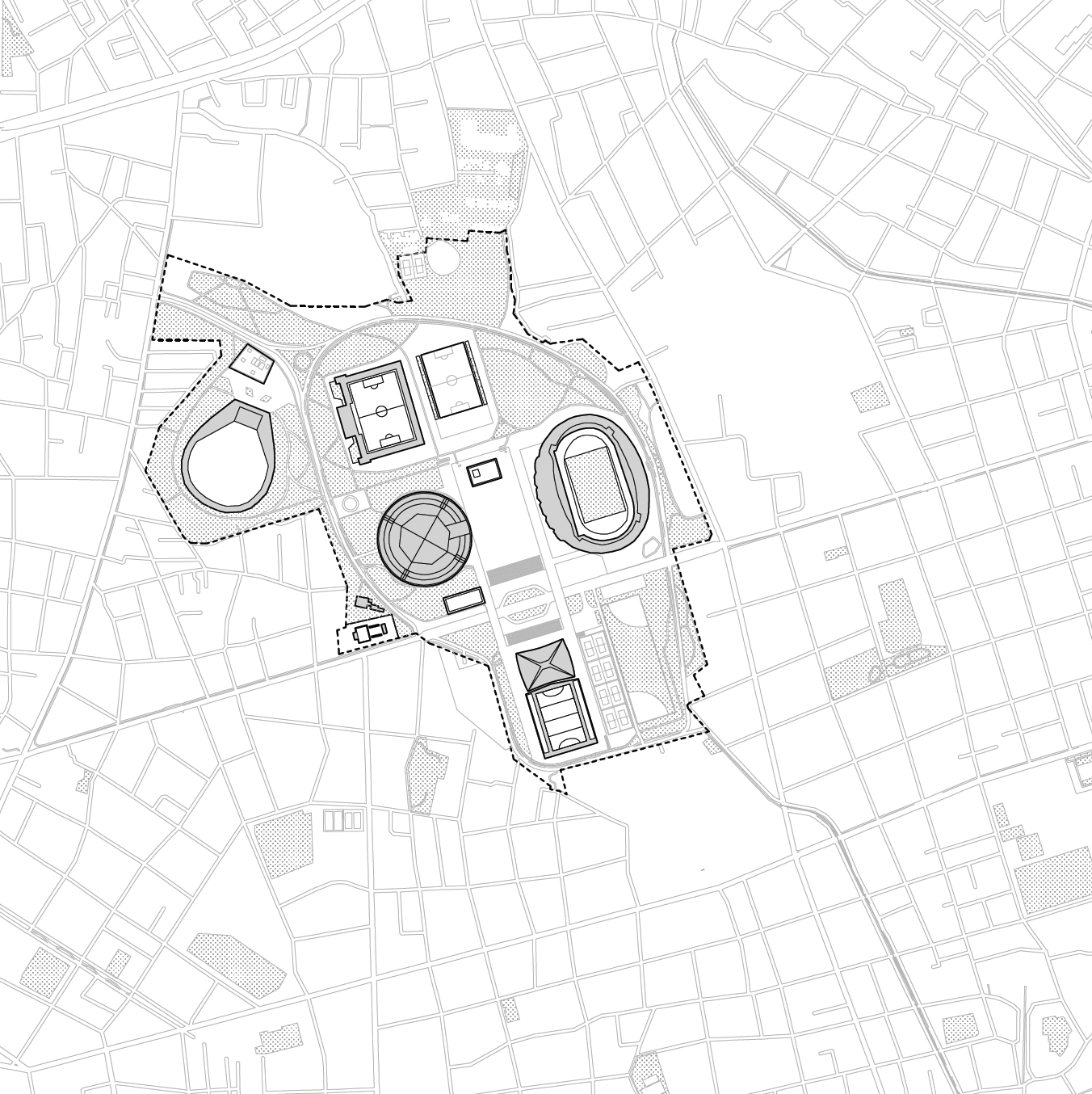Analyzing the Legacy of Olympic-Led Urbanization

Tokyo is a city of urban villages. But since World War II the city has witnessed a proliferation of large-scale urban design initiatives. These began with the government-led development of Nishi Shinjuku, an office district in the western part of the city.
More recently, urban development has been the purview of a small number of big development companies such as Mori Building, Mitsui Fudosan, and Mitsubishi Estate. The efforts of each are distinct in character and often concentrated in a particular part of the city. Big developers have also been joined by large railway companies, like Tokyu Corporation and others, that own and manage land in the city to complement their ridership income.
These drawings analyze the difference in approach between the various projects and demonstrate the evolution and impact of mega projects on the city and its way of life.
List of image sources:
Nishi-Shinjuku Subcenter (accessed in August 2020)
1950s—1: Geospatial Information Authority of Japan (GSI), 1950s—2: Japan Press Research Institute / Kyodo News Co., Ltd., 1964–: Japan Press Research Institute / Kyodo News Co., Ltd., 1971: R. Matsu, Pinterest, 1964: Throw Out Your Books, 1968: Hanadayori (June 14, 2007) / “Shinjuku Yugen”, 1976: Wiiii / CC BY-SA, 1978: Skyscraperclub.com, 1979: Rs1421 / CC BY-SA, 1986—1: The Skyscraper Center, 1986—2: Tokyo Medical University, 1989: Rs1421 / CC BY-SA, 1990: Rs1421 / CC BY-SA, 1994—1: Wiiii / CC BY-SA, 1994—2: Travel Notes, 1994—3: Kakidai / CC BY-SA, 1994—4: User:Kentin / CC BY-SA, 1996—1: Ons / CC BY-SA, 1996—2: User:Kentin / CC BY-SA, 2003: User:Kentin / CC BY-SA, 2008—1: Tokyu Livable, Inc., 2008—3: Wiiii / CC BY-SA, 2010: Ooozooone / CC BY-SA, 2011—1: Mountainlife / CC BY-SA via Council on Tall Buildings and Urban Habitat, 2011—2: Nomura Real Estate Urban Net Co., Ltd., 2012: Kaijima Corporation, 2014: Terri Meyer Boake via Council on Tall Buildings and Urban Habitat, 2019: Skyscrapers in Japan (日本の超高層ビル), 2020: Google Street View, 2022: Skyscrapers in Japan (日本の超高層ビル), 2023: Shinjuku City Keikan-machizukuri Council (新宿区景観まちづくり審議会), 2029: 超高層マンション・超高層ビル (blog)
Mori Strategic Area (accessed in August 2020)
1986: M&N Environmental Planning Institute Co., Ltd., 2001: Mori Building Co., Ltd., 2002: Federico Mata / CC BY-SA, 2003: japan-guide.com, 2012: Mori Building Co., Ltd., 2014: Mori Hills Reit Investment Corporation, 2020: Japan Today, 2022: Mori Building Co., Ltd., 2023: Mori Building Co., Ltd., 2020s—1: Diamond Weekly, Dec. 23, 2006, 2020s—2: Google Maps
Disclaimer: The purpose of the content seeks to further scholarly discourse. Where applicable, every effort has been made to credit all photographs used in this article. For general inquiries or requests concerning credits, please contact the website administrator at info@japanstory.org.